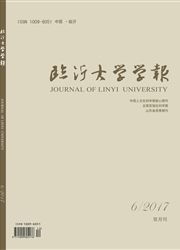
欢迎您!东篱公司
退出

 中文摘要:
中文摘要:
"不"与动补结构的组合,一直是留学生学习汉语的一个难点。教师如果单从语法上讲解难以收到良好的效果,其实从语义背景上分析,可以很清楚地作出区分。"不"在动补结构前时,往往带有很强的主观能动色彩,"不"在动补结构中间时,常是客观判断或在心理上把它处理成从客观的规律或真理出发来给的评价。
 英文摘要:
英文摘要:
The combination of "Bu" and V+complement structure is difficult to the foreigners who are learning Chinese. It is hard to understand them if they are explained literally and grammatically. In fact, they have significant differences on the semantic background. They always have subjective meanings strongly when "Bu" is in fxont Of the verb-complement. While when "Bu" appears in the middle of V+complement, this structure usually means an objective judgment.
 同期刊论文项目
同期刊论文项目
 同项目期刊论文
同项目期刊论文
 期刊信息
期刊信息
